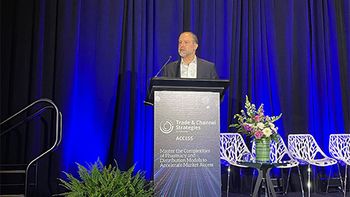
Cord blood banking needs better patient information, says AAP
American Academy of Pediatrics updates its cord blood banking guidance
Healthcare organizations, and the temperature-controlled shipping infrastructure that supports it, should expect a growing need for cord blood banking services. That’s one conclusion that can be drawn from a
“Perhaps the most immediate challenge is that of educating medical personnel, parents, and the public about the increasing need and uses of cord blood banking,” says the report. Over the past decade or so, the cord blood activity has more than doubled, with nearly one million transplants of the stem cells occurring annually by the early 2010s. the report notes that “Placental (i.e., cord) stem cells have become definitive therapy for many disorders, including lymphocyte malignancies, hemoglobinopathies, immune deficiencies and metabolic abnormalities. Cord blood cells are given intravenously, and normal donor stem cells replace the defective stem cells within a few months, and the child is rescued from a life-threatening disease.” Such therapies are not limited to conditions that arise in infants, but AAP notes that much additional research is needed on stem cell therapies, notably for regenerative medicine.
According to AAP data cited in the guidance, around 800,000 cord blood units are being stored currently in public blood banks, while some 5 million are being stored privately. Private storage can cost the parents of a newborn several thousand dollars, plus an annual maintenance fee; public storage is mostly free.
In either case, the situation points to more activity, and more regulatory rigor, around the shipping and storage of cord blood. This will affect both
Newsletter
Stay ahead in the life sciences industry with Pharmaceutical Commerce, the latest news, trends, and strategies in drug distribution, commercialization, and market access.





